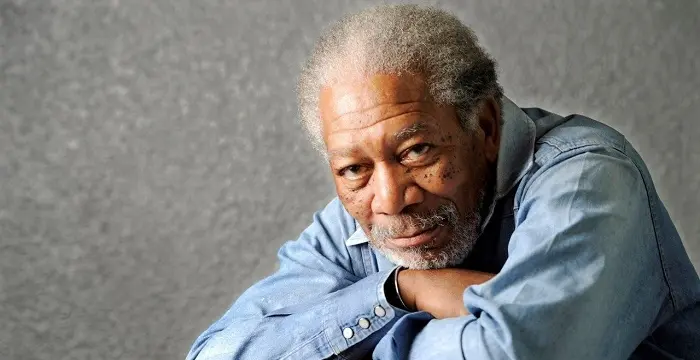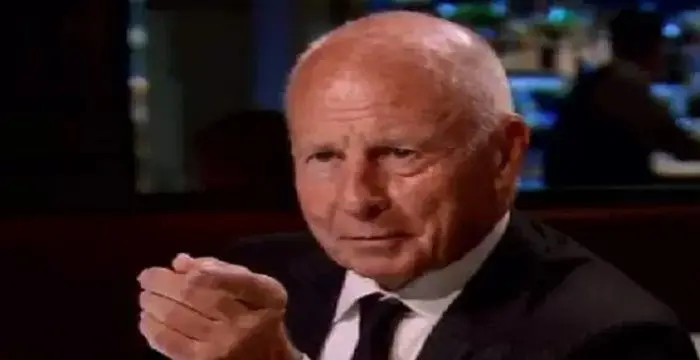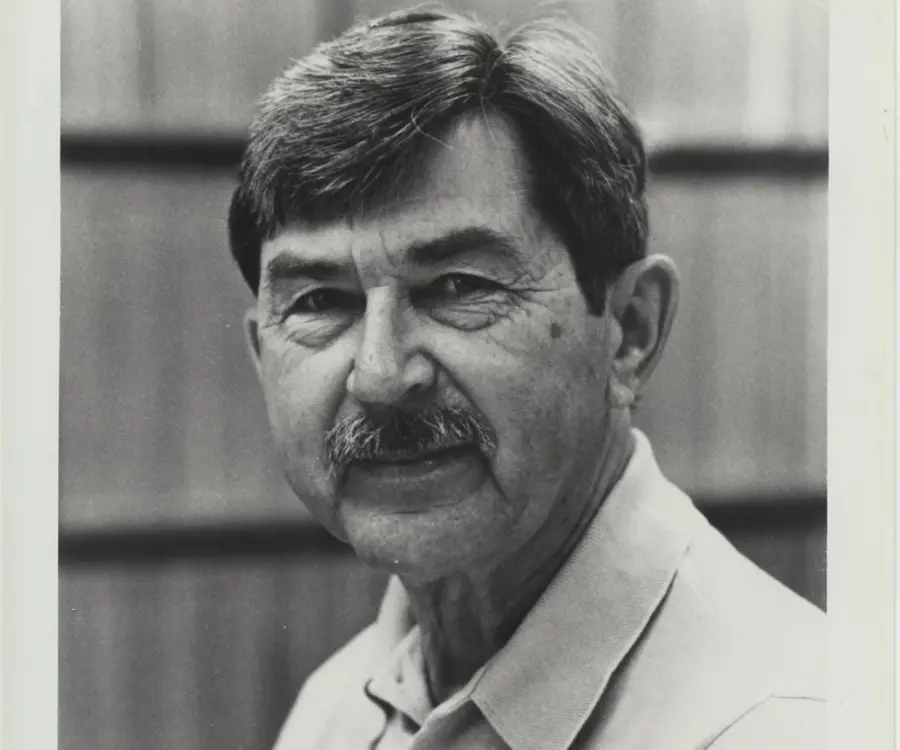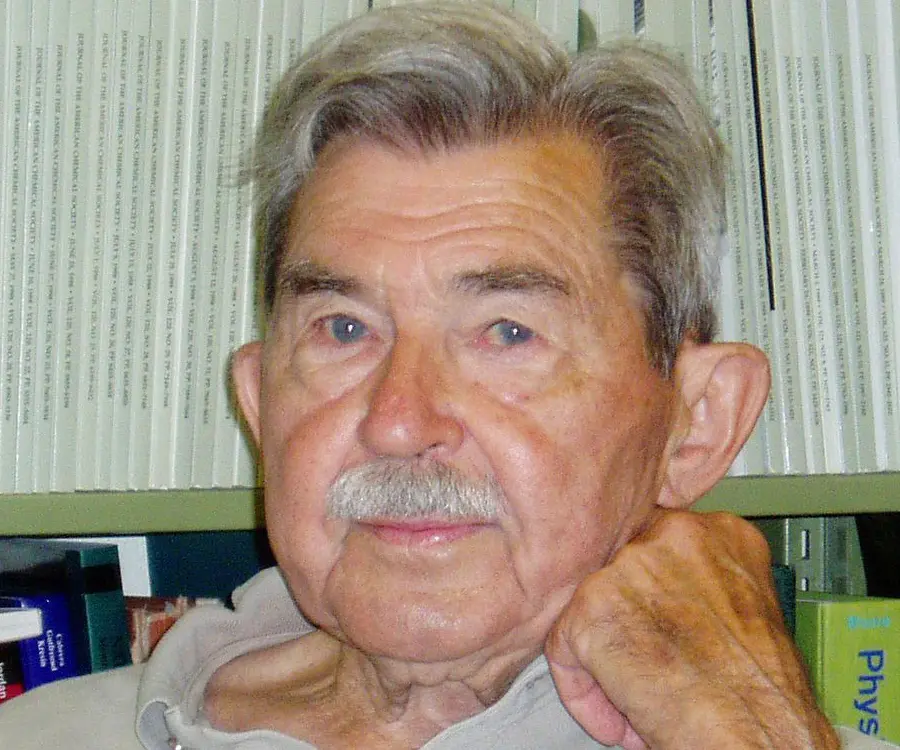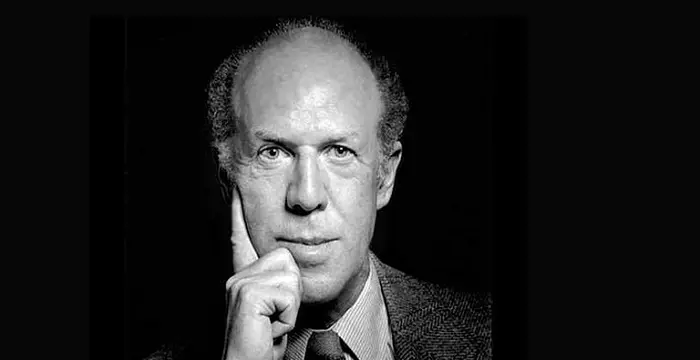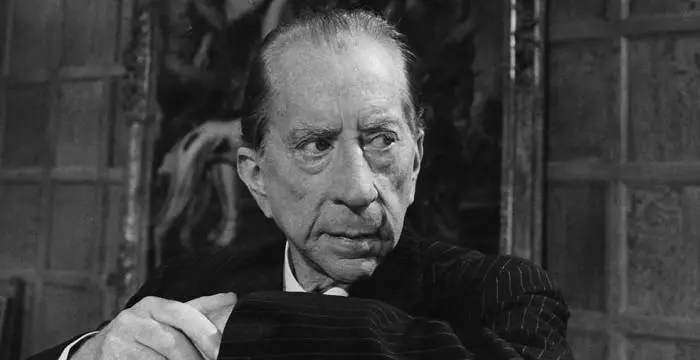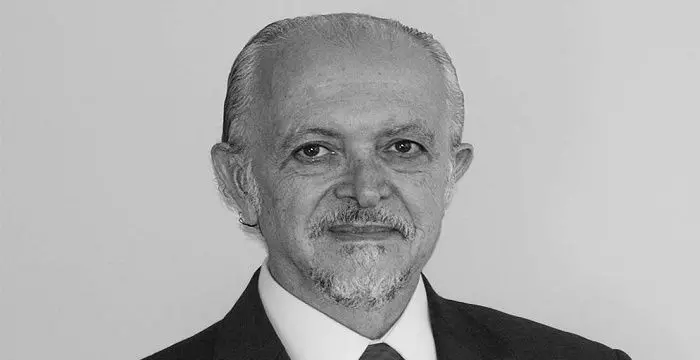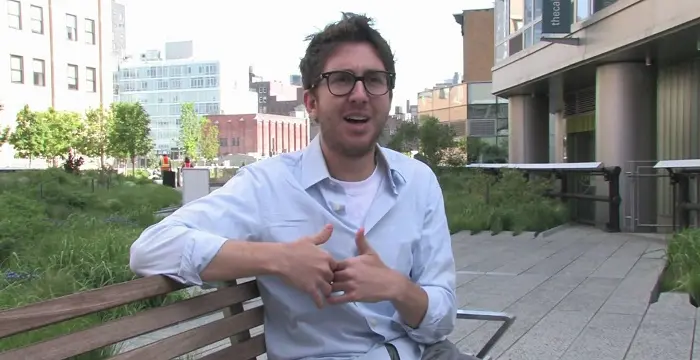
Henry Taube - New York University, Family and Childhood
Henry Taube's Personal Details
Henry Taube was a Canadian-born American chemist who received the 1983 Nobel Prize in Chemistry
| Information | Detail |
|---|---|
| Birthday | November 30, 1915 |
| Died on | November 16, 2005 |
| Nationality | Canadian, American |
| Famous | New York University, University Of California, Berkeley, Scientists, Chemists |
| Spouses | Mary Alice Wesche |
| Childrens | Heinrich Taube, Karl Andreas Taube, Linda Taube, Marianna Taube |
| Universities |
|
| Notable Alumnis |
|
| Birth Place | Neudorf, Saskatchewan, Canada |
| Born Country | Canada |
| Gender | Male |
| Father | Samuel Taube |
| Mother | Albertina Tiledetzski |
| Sun Sign | Sagittarius |
| Born in | Neudorf, Saskatchewan, Canada |
| Famous as | Chemist |
| Died at Age | 89 |
// Famous New York University
Morgan Freeman
Morgan Freeman is an Academy Award winning actor known for his work in movies like ‘Street Smart’, ‘Driving Miss Daisy’ and ‘Million Dollar Baby’. This biography provides detailed information about his childhood, life, achievements, works & timeline.
Sean Hannity
Sean Hannity is a television host and political commentator best known for the talk show ‘The Sean Hannity Show’. This biography of Sean Hannity provides detailed information about his childhood, life, achievements, works & timeline.
Thomas Girardi
Thomas Girardi is an American attorney who co-founded the law firm, Girardi & Keese. Check out this biography to know about his childhood, family life, achievements and fun facts about him.
Henry Taube's photo
Who is Henry Taube?
Henry Taube was a Canadian-born American chemist who received the 1983 Nobel Prize in Chemistry. He was noted and earned much acclaim on his studies regarding the mechanism and oxidation-reduction process during chemical reactions. He completed his graduation and master’s degree in Science from the University of Saskatchewan, after which he went on to earn his PhD in Chemistry from University of California at Berkeley. After his graduation he worked at the university for a short period and also served the National Defense Research Committee during World War II. Post this period, he joined the University of Chicago where he worked for fifteen years and later joined the Stanford University as faculty and became professor emeritus in 1986. He was recipient of several prestigious awards like the Priestley Medal, National Medal of Science and the Welch Award among many others. He was a two time recipient of the Guggenheim fellowships in 1949 and 1955. Henry Taube had to his credit over 600 publications during his career. He also authored a book titled ‘Electron transfer reactions of complex ions in solution’.
// Famous Scientists
Juliane Koepcke
Juliane Koepcke is a German-Peruvian biologist, who was the lone survivor among the 92 passengers and crew of the ill-fated LANSA Flight 508 that crashed in the Peruvian rainforest on 24 December 1971. Know more about her life in this biography.
Henry Cavendish
Henry Cavendish was a theoretical chemist and physicist, renowned for discovery of hydrogen and calculation of the mass of earth. To know more about his childhood, profile, timeline and career read on
Konstantin Tsiolkovsky
Konstantin Tsiolkovsky was a Russian rocket scientist and a pioneer of astronautics. This biography provides detailed information about his childhood, family, personal life, career, achievements, etc.
Childhood & Early Life
Henry Taube was born on 30 November 1915 at Neudorf, Saskatchewan in Canada. His parents, Samuel Taube and Albertina Tiledetzski were farmers. He had three older brothers.
At the age of 12, he shifted to Regina in order to pursue high school education at Luther College. After completing his studies, he began working at the college as laboratory assistant for Paul Liefeld.
He graduated with a Bachelor of Science degree in 1935 and completed his Master of Science degree in 1937 from the University of Saskatchewan.
He then joined the University of California at Berkeley and completed his PhD in Chemistry in 1940. His graduate research was on the ‘photodecomposition of chlorine dioxide and hydrogen peroxide in solution’.
Career
After his education he worked in Berkeley as instructor in chemistry until 1941. Though he applied for work in major universities across Canada, he did not receive positive responses and in 1941 joined Cornell University as assistant professor. He remained there until 1946.
While working at Cornell University he focused on research concerning isotopes. His study showed that in water the ions of metals develop bonds with water molecules thereby producing hydrates or coordination compounds. The geometry and strength of these coordination compounds vary according to the identity and state of oxidation of the ion.
In the presence of specific chemical species like chlorine ions, ammonia etc, analogous coordination compounds when engaged in such reactions form ‘ligands’.
During the World War II, he served at the National Defense Research Committee and later in 1946 joined the University of Chicago as assistant professor. He worked there until 1961 as associate professor and later became a full professor. Between 1956 and 1959, he also headed the Department of Chemistry at the University of Chicago; however, he was not keen on administrative work.
Beginning in 1956, apart from his academic career Henry Taube worked as a consultant at Los Alamos National Laboratory. He was associated with the laboratory until the 1970s.
In 1952 he released a paper on his work associating the rate of chemical reactions to electronic structure in the journal, Chemical Reviews. His primary discovery was that rather than a mere exchange of electrons, molecules build a sort of ‘chemical bridge’. He also explained how the process of transfer of electrons in metals is dependent on the structure of the chemical bridge.
He pursued a lifelong interest in studying oxidation-reduction otherwise known as ‘redox’ reactions, in which electrons are gained or lost in a chemical reaction process. His research findings have been utilized in the selection of metallic compounds as catalyst, superconductors and pigments, also in studying the role and uses of metal ions as components in specific enzymes. He conducted his electron transfer studies in elements ruthenium and osmium that have immense capacity for Pi back bonding.
In 1962 he left Chicago to join Stanford University as professor. He worked there until 1986 and became a professor emeritus at the university in the same year. His position at Stanford University allowed him to continue his research work which he continued until 2001.
During the span of his career, he wrote over 600 publications and a book titled ‘Electron transfer reactions of complex ions in solution’ (1970).
Major Works
Henry Taube was a renowned chemist noted for his studies of electron transfer reactions primarily in metal complexes and research regarding ‘redox’ reactions or oxidation – reduction reactions.
Awards and Achievements
He was a two time recipient of the Guggenheim fellowship, once in 149 and the next in 1955.
In 1955 he was awarded the American Chemical Society Award for Nuclear Applications in Chemistry.
The Harrison Howe Award, Rochester Section by American Chemical Society was bestowed upon him in 1960.
He was the recipient of the 1964 Chandler Medal by Columbia University.
In 1966 the John Gamble Kirkwood Award, New Haven Section, American Chemical Society was awarded to Henry Taube.
The ACS Award for Distinguished Service in the Advancement of Inorganic Chemistry was awarded to him in 1967.
In 1971 he was awarded the Nichols Medal, New York, ACS as well as the Willard Gibbs Medal, Chicago Section, ACS.
The University of New South Wales, Australia, awarded him with the F.P. Dwyer Medal in 1973.
In 1977 he was awarded the National Medal of Science.
He was the recipient of the Allied Chemical Award for Excellence in Graduate Teaching & Innovative Science in 1979.
In 1980 the T.W. Richards Medal of the Northeastern Section, ACS was awarded to him.
The ACS Award in Inorganic Chemistry of the Monsanto Company and The Linus Pauling Award, Puget Sound Section, ACS were awarded to him in 1981.
In 1983, he was awarded the Nobel Prize in Chemistry. Other awards he received the same year include National Academy of Sciences Award in Chemical Sciences, Bailar Medal from the University of Illinois and the Robert A. Welch Foundation Award in Chemistry.
In 1985 he received the Priestley Medal from the ACS.
The International Precious Metals Institute awarded him with Distinguished Achievement Award in 1986.
He was the recipient of the Oesper Award by the Cincinnati Section of the American Chemical in 1986.
In 1990 he received the G. M. Kosolapoff Award, Auburn Section- ACS.
He received honorary degrees from numerous universities - Honorary Doctorate from University of Saskatchewan, Ph. D. Honoris Causa of the Hebrew University of Jerusalem and Honorary Doctor of Science from the universities like University of Chicago, Polytechnic Institute, New York, State University of New York, University of Guelph, Seton Hall University, University of Debrecen in Hungary and Northwestern University.
He was a member of numerous reputed professional societies that include American Chemical Society, American Academy of Arts & Sciences, Royal Society as Foreign member, Australian Academy of Science as Corresponding member, Royal Danish Academy of Sciences & Letters, American Philosophical Society and the National Academy of Sciences.
Personal Life & Legacy
Henry Taube became a naturalized citizen of the United States in 1942.
He married Mary Alice Wesche in 1952 and the couple had three children named Karl Andreas Taube (born in 1957) who grew up to become an anthropologist, Heinrich Taube who later became a music professor and Linda Taube who became a mohair retailer. His stepdaughter Marianna Taube, who was a teacher, died of cancer in 1998.
His hobbies included classical music primarily opera and gardening.
On 16 November 2005, he died in his home at Palo Alto, California. He was 89 years old at the time of his death.
// Famous Chemists
Henry Cavendish
Henry Cavendish was a theoretical chemist and physicist, renowned for discovery of hydrogen and calculation of the mass of earth. To know more about his childhood, profile, timeline and career read on
Walter Kohn
Nobel Laureate Walter Kohn was an Austrian-born American theoretical chemist and physicist. Check out this biography to know about his childhood, life, achievements, works & timeline.
Jabir Ibn Hayyan
Jabir Ibn Hayyan was a medieval era polymath. Check out this biography to know about his life, works and achievements.
Henry Taube's awards
| Year | Name | Award |
|---|---|---|
Other | ||
| 0 | National Medal of Science (1976) | |
| 0 | Nobel Prize in Chemistry (1983) | |
| 0 | NAS Award in Chemical Sciences (1983) | |
| 0 | Priestley Medal (1985) | |
Henry Taube biography timelines
- // 30th Nov 1915Henry Taube was born on 30 November 1915 at Neudorf, Saskatchewan in Canada. His parents, Samuel Taube and Albertina Tiledetzski were farmers. He had three older brothers.
- // 1935 To 1937He graduated with a Bachelor of Science degree in 1935 and completed his Master of Science degree in 1937 from the University of Saskatchewan.
- // 1940He then joined the University of California at Berkeley and completed his PhD in Chemistry in 1940. His graduate research was on the ‘photodecomposition of chlorine dioxide and hydrogen peroxide in solution’.
- // 1942Henry Taube became a naturalized citizen of the United States in 1942.
- // 1952In 1952 he released a paper on his work associating the rate of chemical reactions to electronic structure in the journal, Chemical Reviews. His primary discovery was that rather than a mere exchange of electrons, molecules build a sort of ‘chemical bridge’. He also explained how the process of transfer of electrons in metals is dependent on the structure of the chemical bridge.
- // 1955He was a two time recipient of the Guggenheim fellowship, once in 149 and the next in 1955.
- // 1955In 1955 he was awarded the American Chemical Society Award for Nuclear Applications in Chemistry.
- // 1956Beginning in 1956, apart from his academic career Henry Taube worked as a consultant at Los Alamos National Laboratory. He was associated with the laboratory until the 1970s.
- // 1960The Harrison Howe Award, Rochester Section by American Chemical Society was bestowed upon him in 1960.
- // 1964He was the recipient of the 1964 Chandler Medal by Columbia University.
- // 1966In 1966 the John Gamble Kirkwood Award, New Haven Section, American Chemical Society was awarded to Henry Taube.
- // 1967The ACS Award for Distinguished Service in the Advancement of Inorganic Chemistry was awarded to him in 1967.
- // 1970During the span of his career, he wrote over 600 publications and a book titled ‘Electron transfer reactions of complex ions in solution’ (1970).
- // 1971In 1971 he was awarded the Nichols Medal, New York, ACS as well as the Willard Gibbs Medal, Chicago Section, ACS.
- // 1973The University of New South Wales, Australia, awarded him with the F.P. Dwyer Medal in 1973.
- // 1977In 1977 he was awarded the National Medal of Science.
- // 1979He was the recipient of the Allied Chemical Award for Excellence in Graduate Teaching & Innovative Science in 1979.
- // 1980In 1980 the T.W. Richards Medal of the Northeastern Section, ACS was awarded to him.
- // 1981The ACS Award in Inorganic Chemistry of the Monsanto Company and The Linus Pauling Award, Puget Sound Section, ACS were awarded to him in 1981.
- // 1983In 1983, he was awarded the Nobel Prize in Chemistry. Other awards he received the same year include National Academy of Sciences Award in Chemical Sciences, Bailar Medal from the University of Illinois and the Robert A. Welch Foundation Award in Chemistry.
- // 1985In 1985 he received the Priestley Medal from the ACS.
- // 1986The International Precious Metals Institute awarded him with Distinguished Achievement Award in 1986.
- // 1986He was the recipient of the Oesper Award by the Cincinnati Section of the American Chemical in 1986.
- // 1990In 1990 he received the G. M. Kosolapoff Award, Auburn Section- ACS.
- // 16th Nov 2005On 16 November 2005, he died in his home at Palo Alto, California. He was 89 years old at the time of his death.
// Famous University Of California, Berkeley
Susan Sontag
Susan Sontag is an American critical essayist, cultural analyst, novelist, political activist, filmmaker and playwright of international repute. Read on to find out more about her childhood, career, profile and timeline.
Gerard Debreu
Gerard Debreu was a French-born American economist who brought mathematical precision to economics. Check out this biography to know about his childhood, family life, achievements and other facts related to his life.
J. Paul Getty
J. Paul Getty was an American billionaire businessman and president of the Getty Oil Company. This biography offers detailed information about his childhood, life, career and timeline.
Mario J. Molina
Mario Molina is a Nobel Prize winning chemist from Mexico who co-developed the theory of ozone depletion due to CFCs. To know more about his childhood, career, profile and timeline read on.
Amir Blumenfeld
Amir Shmuel Blumenfeld is an American actor, script writer and comedian of Jewish origin. This biography profiles his childhood, family, career, personal life, achievements and gives some fun facts.
Vicki Iovine
Vicki Iovine is an American author, model, and lawyer. Check out this biography to know about her childhood, family life, achievements and fun facts about her.
Henry Taube's FAQ
What is Henry Taube birthday?
Henry Taube was born at 1915-11-30
When was Henry Taube died?
Henry Taube was died at 2005-11-16
Where was Henry Taube died?
Henry Taube was died in Palo Alto, California
Which age was Henry Taube died?
Henry Taube was died at age 89
Where is Henry Taube's birth place?
Henry Taube was born in Neudorf, Saskatchewan, Canada
What is Henry Taube nationalities?
Henry Taube's nationalities is Canadian, American
Who is Henry Taube spouses?
Henry Taube's spouses is Mary Alice Wesche
Who is Henry Taube childrens?
Henry Taube's childrens is Heinrich Taube, Karl Andreas Taube, Linda Taube, Marianna Taube
What was Henry Taube universities?
Henry Taube studied at New York University,University Of California, Berkeley, University of Saskatchewan (B.Sc.) (1935), University of Saskatchewan (M.Sc) (1937), University of California, Berkeley (Ph.D) (1940)
What was Henry Taube notable alumnis?
Henry Taube's notable alumnis is New York University, University Of California, Berkeley
Who is Henry Taube's father?
Henry Taube's father is Samuel Taube
Who is Henry Taube's mother?
Henry Taube's mother is Albertina Tiledetzski
What is Henry Taube's sun sign?
Henry Taube is Sagittarius
How famous is Henry Taube?
Henry Taube is famouse as Chemist
